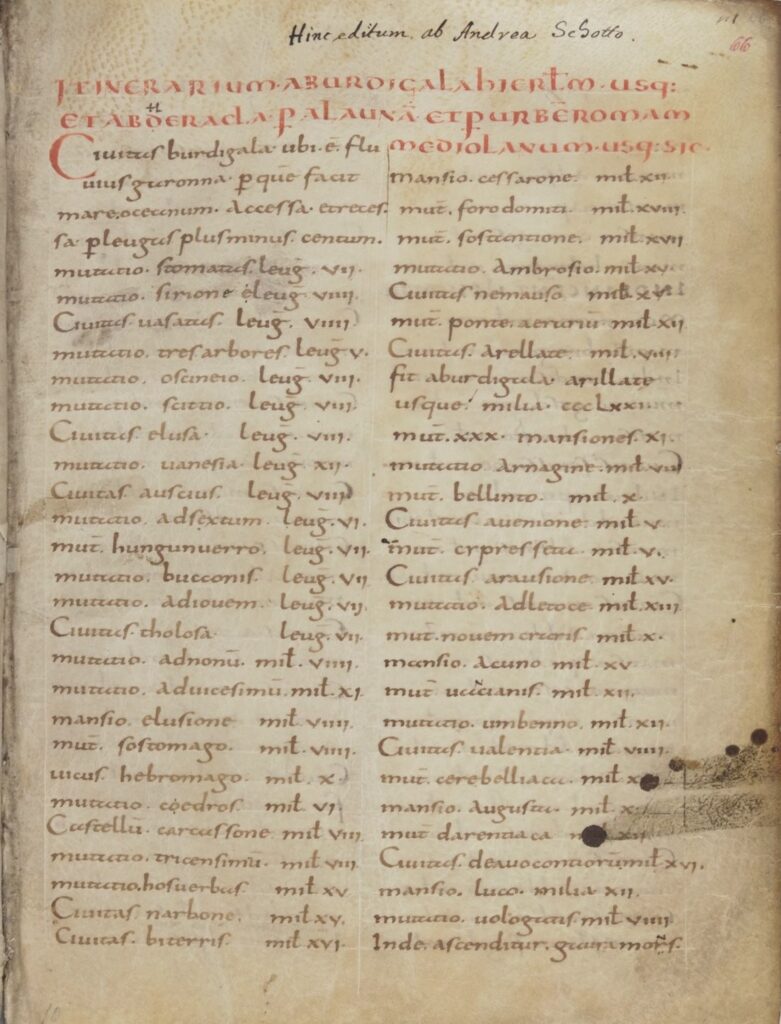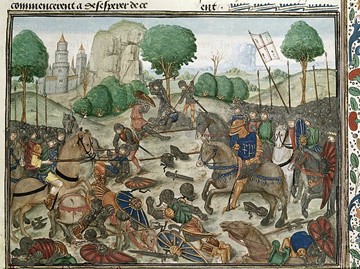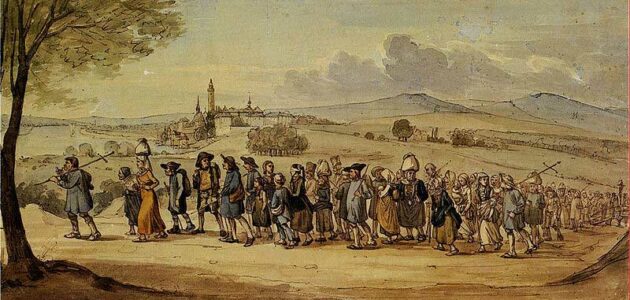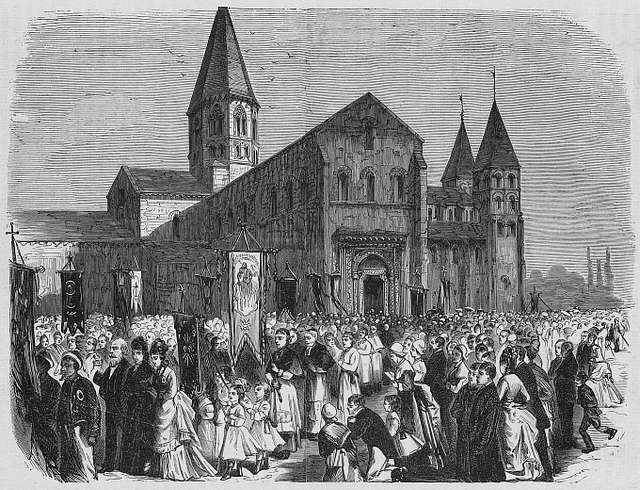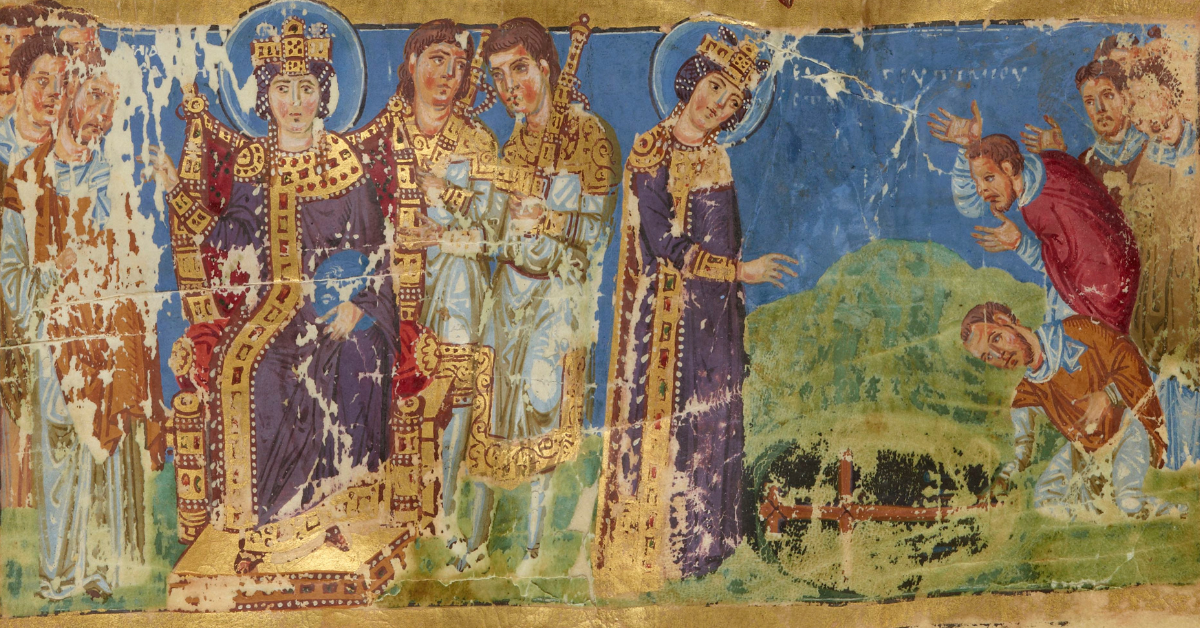
Image: Portrait of the St Helena and her Invention of the True Cross in a 9th century Byzantine manuscript
Ever wondered about the history of Christian pilgrimage? With our students currently attending World Youth Day, we thought it timely to explore how pilgrimages became a special and time-honoured tradition in the Church.
Just a few hundred years after the death of Christ, Christians started going on pilgrimage to sites in the Holy Land that were connected to his life and ministry. The practice was encouraged by Early Church Fathers like Saint Jerome and one of the first pilgrimages was actually undertaken by Saint Helena, mother of Constantine, who journeyed to the Holy Land in 326 AD looking to recover Christian relics.
Ancient travel guides were called itinerarium and the oldest Christian itinerarium is a record by a pilgrim who traveled from the city of Burdigala (now Bordeaux, France) to Jerusalem in 333/334 AD. It’s called the “Bordeaux Itinerary”.
Page of Itinerarium Burdigalense
Throughout the medieval period, pilgrimage sites increased as Christians started to travel to places associated with the Apostles, particular saints and martyrs, and scenes of apparitions of the Virgin Mary. Rome especially became a very important pilgrimage site.
When the Holy Land was conquered by Muslims in the 7th century, new pilgrimage sites developed in Western Europe, like the Way of St. James, leading to the Cathedral of Santiago de Compostela, which began in the 9th century.
Pilgrimage to the East was cut off completely by the Seljuk Turks in the 11th century, which helped trigger the beginning of the Crusades.
A miniature painting of a battle between the Crusaders and the Turks.
But the 500 years from the early 11th to the early 16th century is considered the “Golden Age of Pilgrimage” in Europe, with around one-fifth of Europe’s population either on pilgrimage or helping to facilitate them during this time!
Christian pilgrims in Germany. Painting by Jakob Fürchtegott Dielmann (c.1845)
During the Reformation, the practice of pilgrimage was shunned by Protestants because of its connection to the cult of relics and indulgences, which were often associated with visits to pilgrimage sites. But for Catholics, pilgrimage remains an important aspect of spiritual devotion to this day.
Some of the most famous pilgrimages today include the Camino de Santiago, the El Rocío pilgrimage and the Via de la Plata in Spain; the Shrine of Fatima in Portugal; Chartres, Lourdes and the Basilica of Saint-Denis in France; and the pilgrimage to Assisi.
Pilgrimage in France. Image published in Finnish periodical Suomen Kuvalehti in January 1876.
For young Catholics, World Youth Day serves as the most common and impactful introduction to the profound concept of pilgrimage. World Youth Day (WYD) was established by Pope John Paul II in 1985 as a response to the growing desire among young Catholics for a global event that would enable them to come together and celebrate their faith. The inaugural World Youth Day took place in Rome in 1986, drawing an astonishing number of young pilgrims from various corners of the world. It was an unprecedented gathering that captivated hearts and transcended borders, uniting youth in a shared spiritual experience.
Over the years, World Youth Day has evolved into a recurring international event, held every two to three years in different host cities around the globe. The week-long celebration typically includes inspirational talks, catechesis sessions, prayerful gatherings, and culminates with a poignant Mass celebrated by the Pope.
What makes World Youth Day so special is not merely the opportunity to connect with young Catholics worldwide; it also holds a deeper significance which can be best expressed through these words from Pope Benedict XVI:
“To go on pilgrimage is not simply to visit a place to admire its treasures of nature, art or history. To go on pilgrimage really means to step out of ourselves in order to encounter God where he has revealed himself, where his grace has shone with particular splendour and produced rich fruits of conversion and holiness among those who believe. Above all, Christians go on pilgrimage to the Holy Land, to the places associated with the Lord’s passion, death and resurrection. They go to Rome, the city of the martyrdom of Peter and Paul, and also to Compostela, which, associated with the memory of Saint James, has welcomed pilgrims from throughout the world who desire to strengthen their spirit with the Apostle’s witness of faith and love.”

